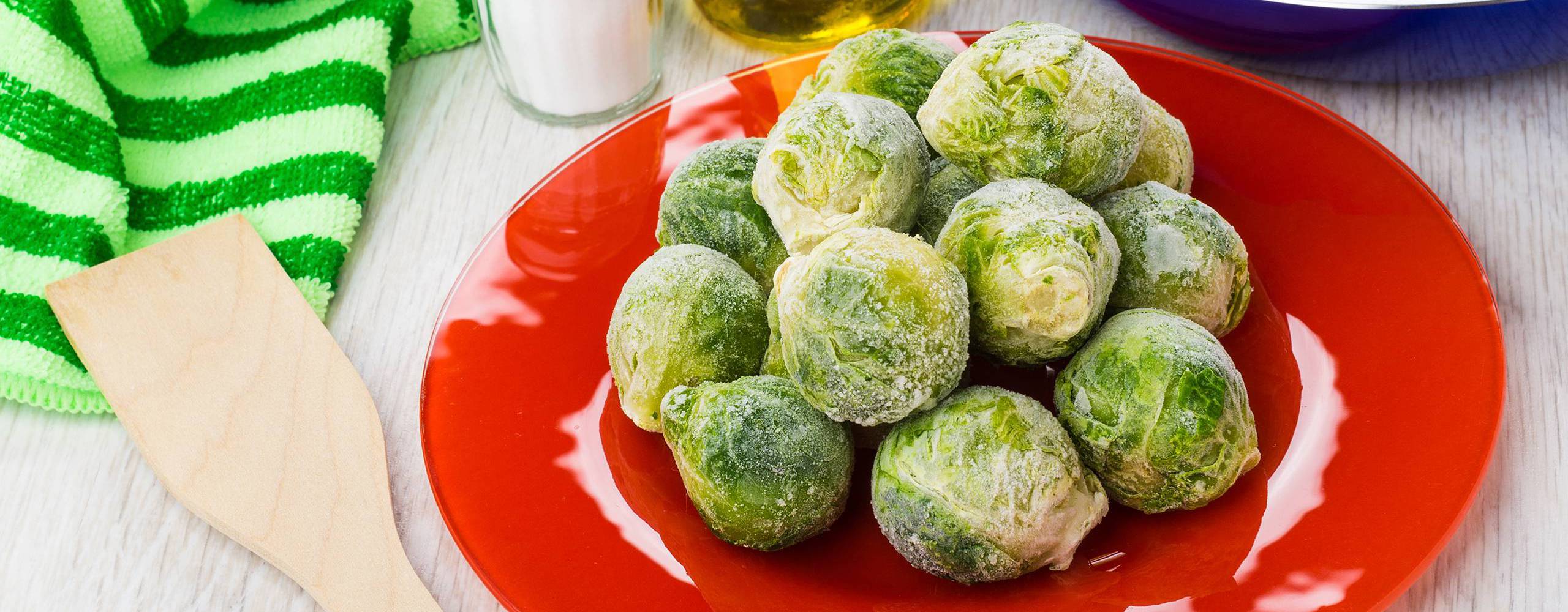Frozen Products
President: Giancarlo FOSCHI - OROGEL SURGELATI Soc. Coop. p.A. Secretary: Giorgio RIMOLDI
Frozen foods are food products that undergo a special freezing process called “deep freezing”, which makes it possible to exceed the temperature zone of maximum ice crystal formation at the necessary speed – depending on the nature of the product – and to continuously maintain the temperature, after thermal stabilisation, at -18 °C (or lower) throughout the product.
In terms of volumes, most frozen foods fall into 5 product segments: Vegetables, Potatoes, Fishery products, Pizzas and Snacks, Recipes. Frozen food products are distributed to the consumer through 3 main channels: Retail; Catering; Door to Door.
SECTORAL STATISTICS
Strengthened by the characteristics that since the entry into the market of our country in the early sixties, have allowed its full entry into the diet of Italians as well as a full integration with the gastronomic traditions of the Peninsula, frozen products have also seen further progress in 2022 on the already positive previous two years. Consumers have once again appreciated its quality and nutritional level, its availability at any time of the year, the speed of preparation, the ease of storage, and last but not least the great anti-waste value. In 2022 the consumption of frozen products in Italy recorded a new historical high, touching one million tons: 990,713, with a growth in volume of +1.2% compared to 2021 and a further increase in annual consumption per capita, which rose to 16.8 kg against 16.6 in 2021. The figure is the result of the acceleration of the growth of the out-of-home (+17.1% in volume) which more than offset the slight decline in Retail (-2.5%) and the most significant ones of door to door (-14.4%) and e-commerce (-9.1%). These results are generally flattering, especially when considered in a context of weak consumption and reduced propensity to spend food like that of the year just ended. .
PRODUCTION PROCESS
Frozen foods give consumers access to products that can, in many respects, be compared to the very best “fresh” foods, for two basic reasons:
• the high-quality of the raw material, as a result of agreements between producers and companies in the frozen food sector;
• the very short amount of time elapsing between the moment the product is obtained and deep freezing.
Two examples: all vegetables are harvested at the moment of maximum ripeness: peas are frozen within two hours of harvesting; spinach between two and eight hours; fish is often deep frozen directly on the fishing boats, or transported to land at zero degrees, where it is processed and immediately frozen. This process ensures that frozen products retain not only their nutritional characteristics (vitamins, proteins, carbohydrates, etc.), but also the structure and flavour of the original products.
Once they reach a temperature of -18 °C (or lower), frozen products are subjected to the so-called “cold chain”: a series of strictly regulated procedures, regulations and techniques that ensure they are preserved in the best possible way, guaranteeing integrity and compliance with the highest safety standards throughout all the stages in the product’s life (transport, storage in the intermediate distribution structures, refrigerated counters in points of sale) until it is purchased by the final consumer.
FOR MORE INFORMATION
Members
BARILLA G. E R. FRATELLI S.P.A. - Via Mantova 166 - 43122 Parma (PR) - www.barillagroup.com
BONDUELLE ITALIA S.R.L. - Via Trento - 24060 San Paolo D'Argon (BG) - www.bonduelle.it
C.S.I. COMPAGNIA SURGELATI ITALIANA S.R.L. - Via Caterina Troiani 75 - 00144 Roma (RM) - www.findus.it
CAMEO S.P.A. - Via Ugo La Malfa 60 - 25015 Desenzano del Garda (BS) - company.cameo.it
DR. SCHÄR S.P.A. - Via Winkelau 5 - 39014 Postal (BZ) - www.drschaer.com/it
EUROFOOD S.P.A. - Via Privata Tacito 12 - 20094 Corsico (MI) - www.greenicespa.it
FROSTA S.R.L. - Via Ludovico di Savoia 4a-6b - 00185 Roma (RM) - www.frosta.it
FRUCTUS MERAN S.P.A. - Via Siegmund Schwarz 2 - Frazione Vilpiano - 39010 Terlano (BZ) - www.fructus.it
FRUTTAGEL Soc. Coop. p.A. - Via Nullo Baldini 26 - 48011 alfoNsine (RA) - www.fruttagel.it
GELIT S.R.L. - Via Ninfina km 2+700 - 04010 Doganella di Ninfea (LT) - www.gelit.it
INDUSTRIE ROLLI ALIMENTARI S.P.A. - Via Nazionale 544 - 64026 Roseto degli Abruzzi (TE) - www.rolli.it
ITALPIZZA S.P.A. - Via Gherbella 454/A - 41126 Modena (MO) - www.italpizza.it
ITALSUR S.R.L. - Contrada Pianura Vomano - Zona Industriale - 64024 Notaresco (TE) - www.italsur.it
O.R.T.O. VERDE S.C.A.P.A. - Via Strada della Bruciata 16 - 60019 Senigallia (AN) - www.ortoverde.eu
OROGEL SURGELATI Soc. Coop. p.A. - Via Dismano 2600 - 47522 Cesena (FC) - www.orogel.it
PAN SURGELATI S.R.L. - Via B Franklin 1 A - C.P. 320 - 39055 Laives (BZ) - www.pan.it
PIZZOLI S.P.A. - Via Zenzalino Nord 1 - 40054 Budrio (BO) - www.pizzoli.it
RONCADIN S.P.A. - Via Monteli 3 - 33092 Meduno (PN) - www.roncadin.it
SACPO - SOCIETÀ ABRUZZESE CONSERV. PROD. ORTOFRUTTICOLI S.P.A. - Via Sorrentino - 67050 Ortucchio (AQ) - www.sacpo.it
SPECIALITÀ DEI PICENI S.R.L. - Via del Commercio 128 - 63100 Ascoli PicenO (AP) - www.bachettifood.it
SURGITAL S.P.A. - via Bastia 16/1 - 48017 Conselice (RA) - www.surgital.com
VALSOIA S.P.A. - Via Ilio Barontini 16/5 - 40138 Bologna BO - www.valsoia.it









